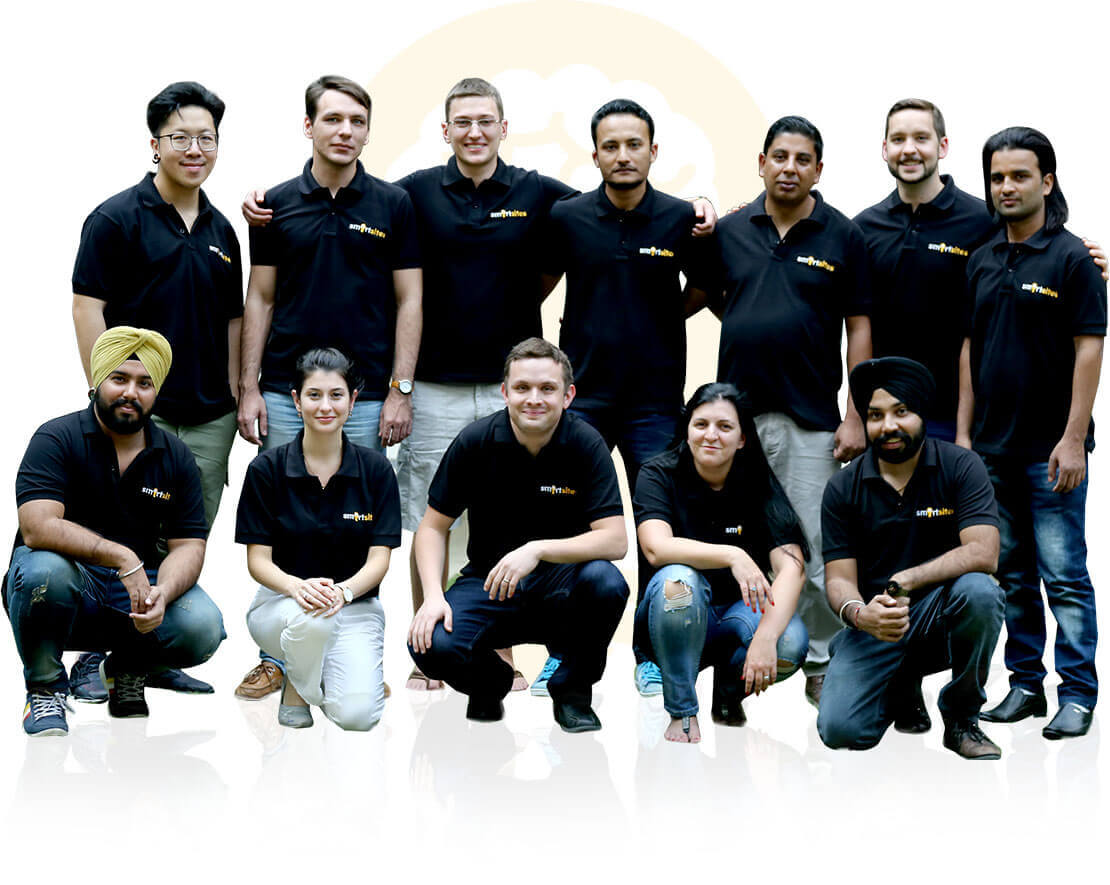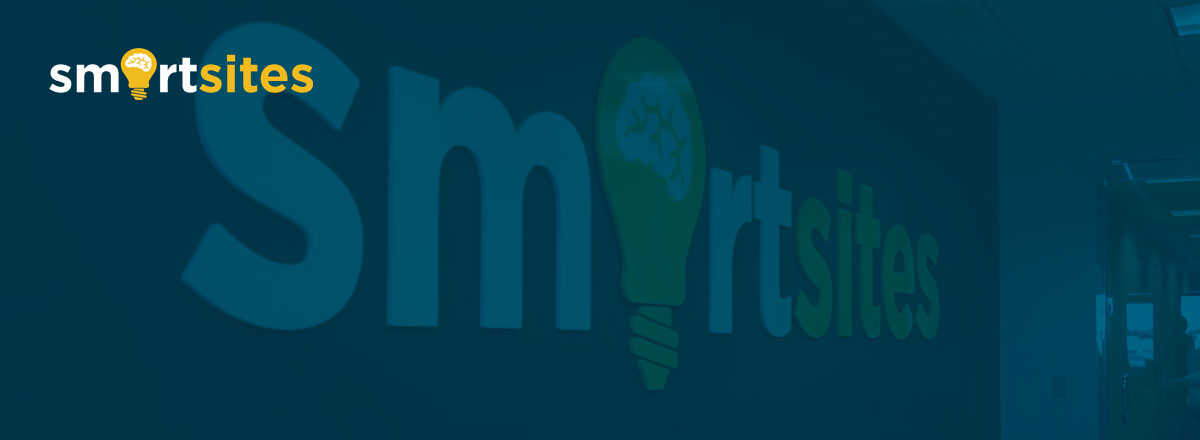“When we were smaller and were only spending $10,000/mo on marketing, we couldn’t afford to waste any of that. Now that we spend in excess of $100,000/month, we’re able to set aside 10-15% of the budget to experiment with new media, new strategy, and new ideas.”
Introduction
If you’re running your own agency, the goal is to grow without sacrificing the quality of the service you’re delivering.
However, this is easier said than done. Agency growth is a double edged sword. Under the pressure of growth how will you keep your clients organized? How will you successfully delegate projects? And most importantly – how will you do all of this while simultaneously keeping up the momentum with marketing and new client acquisition?
To help us answer these questions and many others, Filecamp, the makers of your favorite digital asset management software, recently reached out to the digital marketing agency SmartSites to learn how they successfully scaled their agency to 100 employees in less than 10 years.
SmartSites is a major player in the agency space and we’re excited to allow you, our blog readers, the opportunity to gain insights from their processes, operations and mistakes – to help you pave your own path to success.
Without further ado, let’s jump into the interview.
THE INTERVIEW
Thank you so much for joining us today. The readers of our blog are in various stages of growing their own agencies – and are often looking to learn from successful agencies that have come before them. Could you kick off the interview by giving us an idea of the time frame in which you scaled?
“Thank you for having me! I started the company with my brother in April 2011. Since then, we’ve scaled the business from 8 to over 100 now spanning 6 offices worldwide.”
Congratulations! As you started to scale, how did you go about finding your first clients? Were these methods different at different times of growth? For example, in the very beginning, was something working quite well, that later you discovered wasn’t generating enough leads to suit your service potential? Or perhaps the times simply changed and you caught on to new marketing ideas?
“Interestingly, our methods of lead acquisition have not changed much. Being a digital media company, we had a natural proficiency at digital advertising. We used that to acquire leads for ourselves just like we did for our clients.”
When you were doing your own marketing and branding in the beginning stages, how much of the budget was reserved for marketing? Looking back, do you still think that was a good decision? Would you change anything about that if you could go back and try again?
“The amount reserved for marketing has actually remained fairly consistent as a percent of revenue. The more in revenue (and profit) we generated, the more we re-invested in the business. The caveat is that with a bigger marketing budget, we were able to set aside more for “experimentation”. For example, when we were smaller and were only spending $10,000/mo on marketing, we couldn’t afford to waste any of that. Now that we spend in excess of $100,000/month, we’re able to set aside 10-15% of the budget to experiment with new media, new strategy, and new ideas.”
Looking at your case studies, I can see that you focus on serving many industries – from truck parts to health and wellness. How do you manage your marketing approach with this wide range of industries? Do you decide the niches you want to target and go hard within each one individually, or do you have a blanket system to reach all of them at the same time?
“Excellent observation! We are completely industry-agnostic – meaning we work with every single industry and no industry represents over 10% of our business. The digital strategies we developed over the years are focused on generated results for our clients and are adaptable to work for every industry. For example, we are very media-agnostic; certain clients will perform better on Google, certain clients on Facebook. We always make sure we’re doing what’s right for our clients and what generates them the best returns.”
I see that your company is deeply customer centric – as you say you have a “relentless focus” on your clients. How do you balance such a customer-centric approach with the actual service being provided?
“Yes, definitely. I would say we are both customer & employee centric. Our leadership team’s focus is solely on training and supporting our employees to provide the best possible services to our clients. Every client is obviously different, but we train our staff to be able to work with all clients and most importantly provide value. At the end of the day, if our employees are happy, and we’re providing value to our clients, we’ve won.”
What were some of your agency’s biggest growing pains early on and how did you overcome those obstacles?
“Growing pains are very common and something we continue to go through. The ultimate challenge is to grow the company at such a pace as to keep up with our employee growth and make sure we don’t sacrifice the service we provide to our clients. Biggest obstacles? Hiring at the right time. Hire too early and you have idle employees that cost the company a lot of money. Hire too late, and employees are overloaded and the quality of work (and employee morale suffers). I think we’ve done an exceptional job at growing at the pace we have – we’ve doubled the company every ~2.5 years (in both employee count and revenue). However, I know lots of tech startups are usually growing at break-neck speeds and moral and quality of service tend to suffer as a result.”
We recently wrote a post about managing creative teams. It’s a topic we’re deeply interested in. So let’s talk about delegation for a second. You cover the A-Z’s of digital marketing. As an agency you’re working in many different disciplines (such as design and SEO). How do you manage collaboration amongst your team? Is this done on a case-by-case basis depending on whichever team members are relevant – or do you try to keep everyone in the loop at all times?
“Great question! Internally, our company’s project managers are separated into two groups. 1) Project Managers who handle SEO and website design. 2) Project Managers who handle PPC. Logically it makes sense. However, over half of our clients use us as their holistic digital solution (websites design, seo, ppc & more). Internally, we have dozens of initiatives to make sure the teams are cross-trained and collaboration. Everything from skill training seminars, to weekly co-PM meetings. It’s not easy, but certainly important to make sure our clients have a smooth and transparent experience.”

How did this internal strategy change over time? I imagine when you were first starting out it wouldn’t have been possible, or necessary, to have so many specialists on board. How did that transform as you started to get bigger? And, most importantly, how did you know it was time to add more team members?
“We’ve had a lot of changes over the years. The most important part of running a business – and I tell people this in my speaking engagements – is to stay flexible and adaptable. One of the biggest advantages any small business has is the ability to be agile and change quicker than their bigger rivals. For example – when we just started the company, we didn’t even have a distinction between sales (account managers) and project management. Whoever sold the client would then become the project manager. It worked great as a small company – but as we grew, we realized that those departments needed to be separate to focus on individual goals. Looking back on it now – it’s crazy to even think we had it working the way we did. However, we were able to be agile and change our internal structure to once again make sure our clients were getting the best experience.”
To tie it all together here, if you could give our readers two of your biggest tips for managing internal operations as you scale, what would those be?
“If there are two takeaways the readers can have from all of this it would be this:
- Stay agile, adaptable and flexible. These are the traits that allow small and medium sized businesses to out-perform their larger counterparts
- Equally as important, you have to take risks and experiment. Everyone has heard the expression: no risk, no reward. It couldn’t be any more true in business. Those who don’t risk, don’t innovate, don’t experiment, are ultimately superseded by those who do.”
Thank you greatly for taking the time to speak with Filecamp’s blog readers about you experience growing your agency. It’s been a truly valuable learning experience. To our readers, if you’d like to learn more about SmartSites you can follow them on Twitter or head over to their website here.
SmartSites was founded by brothers Alex and Michael Melen, who grew up with a passion for all things digital. With an innovative vision and a lot of hard work, SmartSites quickly became one of America’s fastest growing companies.

